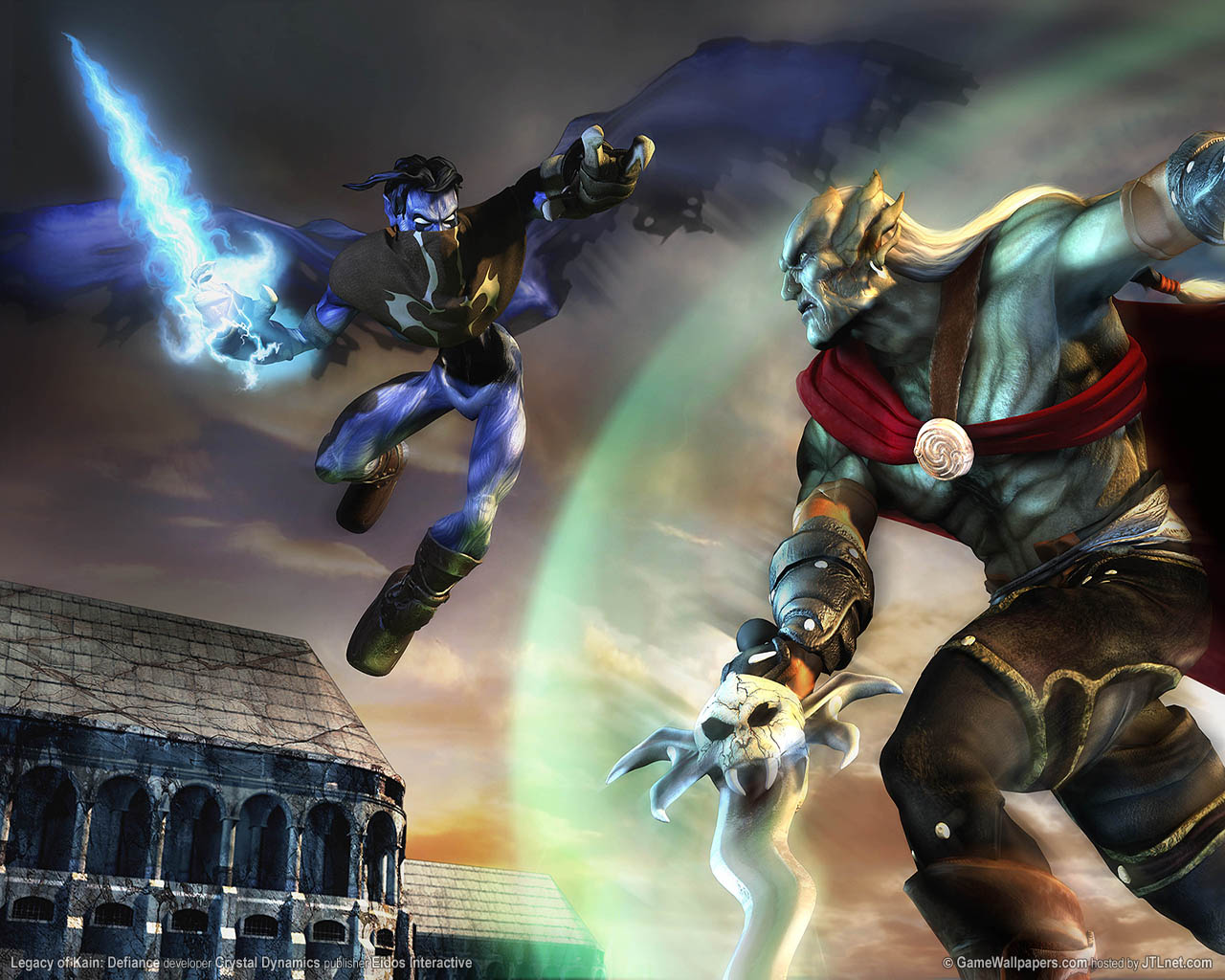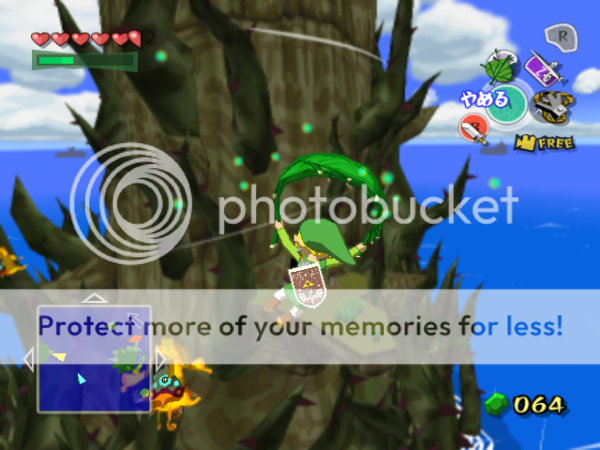 |
| Fly, you fools! |
My history with games can be summarized through just a handful of events. I first got my hands on an NES at age 3 (I have an older brother) and remember spending most of my time on Super Mario Bros. 3, Ninja Gaiden 3, Ultima III (okay now it's getting weird), Mega Man 3 (I'm not even joking), and Batman (phew). It was merely a pastime - I had the kind of parents that put a strict 30-minute daily limit on TV and video games (though Christ I hated being forced to go outside). I'm glad I was thus restricted - while "Bloody Tears" certainly hits me with a wave of nostalgia enough to call forth [bloody] tears, I didn't form the kind of unbreakable rosy spectacles that irrelevantize the opinions of many gamers of my generation. SMB3 straight up blows. So does Final Fantasy VI. I'm not claiming that I'm above subjectivity, only that it's subjectivity of a different kind. I feel a bit adrift in the video game timeline - I'm as likely today to pick up a Genesis game as I am one for 360, and I try to evaluate them in the same light. I don't like saying "well that's just the way things were back then", because I'm not playing it back then. Plenty of old games don't subscribe to supposed limits of their time; Demon's Crest is brilliant. So is XCOM: UFO Defense.
Trying to place everything on a level playing field is part of my larger push, especially with this blog, to evaluate games based on their ideas, not their mechanics. To jump ahead a few years, the most recent step (or second most recent - the latest is probably this blog itself) in my evolution as a gamer was taking on the role of creator. I developed my first game prototype at age 21 (three fucking years ago!) and, well, it didn't like, completely revolutionize my outlook on life or anything, but it instilled in me a voracious hunger to play every game ever. Why? Because when you're creating something, it's impossible to get rid of the niggling sensation that it's been done before. You may not care - as I've realized, you have to not care - but it's still there. My first attempt at a game (and I should say "our", because it was done as a team of three) was a puzzle-platformer called Organ Donor, starring a skeleton who picks up bones and uses them to create tools (hammer, bridge, and ladder were all we got around to implementing). The bone-building mechanic developed naturally from the idea of a skeletal protagonist, but I always knew in my heart that the game was really just A Boy and His Blob.
So now I'm on a quest to play anything and everything I can get my hands on, both to remind myself that everything is a derivative, but also that everything is driven by ideas that someone found worth bringing into the world. Classifications exist for a reason, but games can't be simplified down to their mechanics, or their period of origin, or the community surrounding them. They're an artistic medium, a physical communication of intangible concepts that tells a story, no matter how minimalist, nonsensical, or abstract. Every story is valuable and unique. Yeah, a lot of them are stupid as hell or impossible to comprehend or just so frustratingly presented that you can't be asked to give a damn. But there's almost always something to take away, even from just five minutes of play. Don't get me wrong - I'm not saying every game is "good" or that you have to like everything, but that my experience has broadened as I've come to accept games for what they are, rather than wielding expectations like a chainsaw and turning everything into a comparison. It's why I don't really write reviews and DEFINITELY don't give scores. The fact is, what any one person has actually played (and in particular, games that are widely known) only constitutes like .001% of the games ever made, so your comparisons are bullshit anyway. Remember that next time you use a superlative (which I do ALL THE FUCKING TIME).
Look at something like the NES Dr. Jekyll and Mr Hyde. It's reviled as one of the worst games of all time, and a quick peek at youtube will tell you why. The controls are wonky as a motherfucker, the levels are ungodly repetitive, and it's way too hard. Beyond that, though, I actually think it's a neat idea. Sure, Robot Louis Stevenson novels have no place being adapted as side-scrolling platformers, but the representation of a man losing control to emotion by displaying the world as a freaky horror show ('through his eyes'), forcing scrolling (he can't stop himself!), and inverting progress (the civilized moves in opposition to the animal) is actually pretty clever. I'd venture to say (hilariously unnecessarily) that RLS (R.L. Stein?) himself couldn't have come up with a better way to present that story (which I should clarify that I haven't read and am assuming is basically Incredible Hulk). It's a damn good idea! It succinctly translates the core conflict of the story into a playable mechanic. Make the Jekyll portions a competent platformer (I'm imagining a bourgeois Sonic) and swap in Air Zonk for Hyde, and suddenly it's a classic.
Whining shtick critics like Boggle and The Mad Gaming Dork aren't going to mention that, because they don't take anything away from a game except the immediate time spent playing it. That's something else the role of creator instilled in my experience - the question "what could be changed to make this a good game? How would I have done better?" But the purpose of shit reviewers isn't to ask how to further the medium, but to explode one minor thing they don't like into a tantrum of epic proportion. I've never seen [yeah like I can name an art critic] profanely screaming at the finger of a statue for being improperly proportioned. Execution is indeed key - good ideas do not equal good games, as I mentioned when discussing Anarchy Reigns. You can't play an idea. Nonetheless, anyone truly interested in the medium should recognize a good idea and think about how could that be a good game. I'd say that Jekyll and Hyde is no more deserving of a "worst game ever" accolade than is the conceptually vapid and satisfactorily executed Grand Theft Auto IV - the latter game inspires in me no dreams of a better execution, because there's nothing there that ever could be worth playing, no matter how it was presented.
I was originally going to go on about Darksiders, but this is a long post and I've already made my quota of stupid, unretractable claims for the day. Plus I have enough to say about Darksiders to constitute a post of its own, beyond my commentary about who gives a shit if it's some kind of ripoff king.
Bonus time: our blog from baby's first Organ Donor is still up! http://organdonorgame.tumblr.com/ Check it out and see why I had a bunch of huge arguments with our artist about why do the sprites face the fucking screen! Also, I don't know why the final blog post says we only had two levels, because we definitely had four. Then again, the blog was maintained by the real moron of the team. Which isn't a very nice thing to say.
Trying to place everything on a level playing field is part of my larger push, especially with this blog, to evaluate games based on their ideas, not their mechanics. To jump ahead a few years, the most recent step (or second most recent - the latest is probably this blog itself) in my evolution as a gamer was taking on the role of creator. I developed my first game prototype at age 21 (three fucking years ago!) and, well, it didn't like, completely revolutionize my outlook on life or anything, but it instilled in me a voracious hunger to play every game ever. Why? Because when you're creating something, it's impossible to get rid of the niggling sensation that it's been done before. You may not care - as I've realized, you have to not care - but it's still there. My first attempt at a game (and I should say "our", because it was done as a team of three) was a puzzle-platformer called Organ Donor, starring a skeleton who picks up bones and uses them to create tools (hammer, bridge, and ladder were all we got around to implementing). The bone-building mechanic developed naturally from the idea of a skeletal protagonist, but I always knew in my heart that the game was really just A Boy and His Blob.
 |
| Ha! Fucking Organ Donor! You can't tell this was a couple students' first game, right?!?!?! |
Look at something like the NES Dr. Jekyll and Mr Hyde. It's reviled as one of the worst games of all time, and a quick peek at youtube will tell you why. The controls are wonky as a motherfucker, the levels are ungodly repetitive, and it's way too hard. Beyond that, though, I actually think it's a neat idea. Sure, Robot Louis Stevenson novels have no place being adapted as side-scrolling platformers, but the representation of a man losing control to emotion by displaying the world as a freaky horror show ('through his eyes'), forcing scrolling (he can't stop himself!), and inverting progress (the civilized moves in opposition to the animal) is actually pretty clever. I'd venture to say (hilariously unnecessarily) that RLS (R.L. Stein?) himself couldn't have come up with a better way to present that story (which I should clarify that I haven't read and am assuming is basically Incredible Hulk). It's a damn good idea! It succinctly translates the core conflict of the story into a playable mechanic. Make the Jekyll portions a competent platformer (I'm imagining a bourgeois Sonic) and swap in Air Zonk for Hyde, and suddenly it's a classic.
I was originally going to go on about Darksiders, but this is a long post and I've already made my quota of stupid, unretractable claims for the day. Plus I have enough to say about Darksiders to constitute a post of its own, beyond my commentary about who gives a shit if it's some kind of ripoff king.
Bonus time: our blog from baby's first Organ Donor is still up! http://organdonorgame.tumblr.com/ Check it out and see why I had a bunch of huge arguments with our artist about why do the sprites face the fucking screen! Also, I don't know why the final blog post says we only had two levels, because we definitely had four. Then again, the blog was maintained by the real moron of the team. Which isn't a very nice thing to say.































